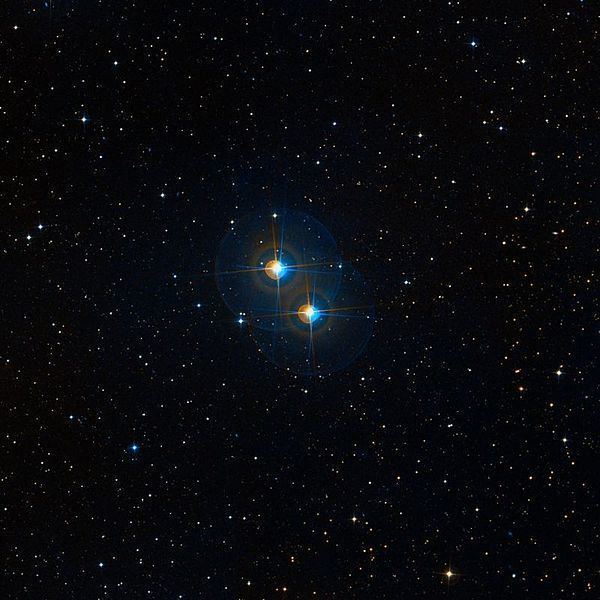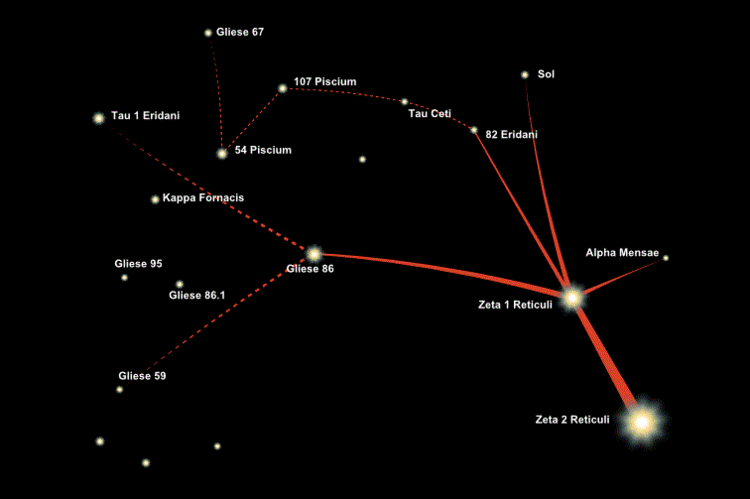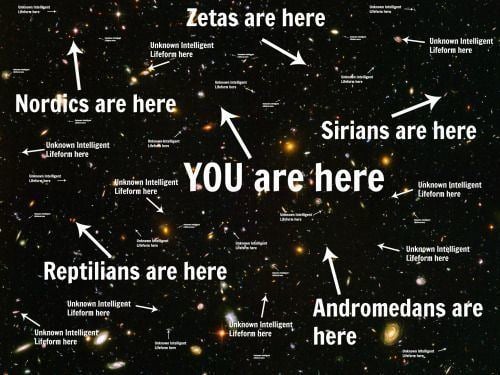Luminosity 0.82 L☉ | Distance to Earth 39.17 light years Radius 584,600 km (0.84 R☉) | |
 | ||
Mass 1.905 × 10^30 kg (0.958 M☉) Coordinates RA 3h 17m 46s | Dec -62° 34′ 31″ Similar | ||
Zeta Reticuli (Zeta Ret, ζ Reticuli, ζ Ret) is a wide binary star system in the southern constellation of Reticulum. From the southern hemisphere the pair can be seen as a naked eye double star in very dark skies. Based upon parallax measurements, this system is located at a distance of about 39 light-years (12 parsecs) from the Earth. Zeta2 Reticuli is orbited by a circumstellar debris disk. Both stars are solar analogs that have characteristics similar to those of the Sun. They belong to the Zeta Herculis Moving Group of stars that share a common origin.
Contents

Zeta reticuli aliens robert lazar 1 of 4
Characteristics

The double star Zeta Reticuli is located in the western part of the small Reticulum Constellation, about 25′ from the constellation's border with Horologium. In dark southern skies, the two stars can be viewed separately with the naked eye, or with a pair of binoculars. ζ1 Reticuli has an apparent magnitude of 5.52, placing it on the border between 5th and 6th magnitude stars. ζ2 Reticuli is slightly brighter at magnitude 5.22.

At a Declination of −62°, the system is not visible from Britain's latitude of +53°, so it never received a Flamsteed designation in John Flamsteed's 1712 Historia Coelestis Britannica. The Bayer designation for this star system, Zeta (ζ) Reticuli, originated in a 1756 star map by the French astronomer Abbé Nicolas Louis de Lacaille. Subsequently, the two stars received separate designations in the Cape Photographic Durchmusterung, which was processed between 1859 and 1903, then in the Henry Draper Catalogue, published between 1918 and 1924.

The two stars are located at similar distances from the Sun and share the same motion through space, confirming that they are gravitationally bound and form a wide binary star system. They have an angular separation of 309.2 arc seconds (5.2 arc minutes); far enough apart to appear as a close pair of separate stars to the naked eye under suitable viewing conditions. The distance between the two stars is at least 3,750 AU, so their orbital period is 170,000 years or more.
Both stars share similar physical characteristics to the Sun, so they are considered solar analogs. Their stellar classification is nearly identical to that of the Sun. ζ1 has 96% of the Sun's mass and 84% of the Sun's radius. ζ2 is slightly larger and more luminous than ζ1, with 99% of the Sun's Mass and 88% of the Sun's Radius. The two stars are somewhat deficient in metals, having only 60% of the proportion of elements other than hydrogen and helium as compared to the Sun. For reasons that remain uncertain, ζ1 has an anomalously low abundance of beryllium. Two possible explanations are: during the star's formation it underwent multiple intense bursts of Mass accretion from a rapidly rotating protostellar cloud, or else the star underwent rotational mixing brought on by a period of rapid rotation during the star's youth.
Both stars are considered unusual because they have a lower luminosity than is normal for main sequence stars of their Age and surface Temperature. That is, they lie below the main sequence curve on the Hertzsprung-Russell diagram for newly formed stars. Most stars will evolve above this curve as they age. ζ1 has an intermediate level of magnetic activity in its chromosphere. Although the kinematics of this system suggest that they belong to a population of older stars, the properties of their stellar chromospheres suggests that they are only about 2 billion years old.
This star system belongs to the Zeta Herculis Moving Group of stars that share a common motion through space, suggesting that they have a common origin. In the galactic coordinate system, the [U, V, W] components of the space velocity for this system are equal to [−70.2, −47.4, +16.4] km/s for ζ1 and [−69.7, −46.4, +16.8] km/s for ζ2. They are currently following an orbit through the Milky Way galaxy that has an eccentricity of 0.24. This orbit will carry the system as close as 17.4 kly (5.33 kpc) and as far as 28.6 kly (8.77 kpc) from the Galactic Center. The inclination of this orbit will carry the stars as much as 1.3 kly (0.4 kpc) from the plane of the galactic disk. This likely puts them outside the thick disk population of stars.
Debris disk
Zeta Reticuli has no known exosolar planets. On September 20, 1996, a tentative discovery of a hot Jupiter around ζ2 was reported, but the discovery was quickly retracted as the signal was shown to be caused by pulsations of the star. In 2002, ζ1 was examined at an infrared wavelength of 25 μm, but no indication of an excess of infrared radiation was found.
In 2007, the Spitzer Space Telescope was used to find an infrared excess at a wavelength of 70 μm around ζ2. This radiation is likely being emitted by a debris disk with a mean Temperature of 150 K (−123 °C) that is orbiting the host star at a distance of 4.3 AU. In 2010, the Herschel Space Observatory, a telescope with a comparatively superior spatial resolution and, unlike Spitzer, able to resolve radiation excesses beyond the wavelength of 70 μm, determined the infrared excess as coming from a debris disk analogous to the Kuiper belt with a semi-major axis of 100 AU and a temperature of 30-40 K, rather than was previously speculated a debris disk analogous to the asteroid belt.
The debris disk around ζ2 shows a double-lobe feature that is asymmetric in both position relative to the host star and in brightness. This feature can be explained if the disk is elliptical in shape, with an eccentricity of greater than or approximately equal to 0.3, and is seen close to edge on. Alternatively, it may be the result of clumping within the disk. In either case, it suggests that something is reshaping the disk; possibly an undetected Jupiter-like planet orbiting outside the disk or a brown dwarf within 20 AU. It is unlikely that ζ1 is shaping the disk, due to the wide separation of the two stars. Simulations of the disk shape indicate that an outer perturbing planet can have a mass no greater than twice that of Jupiter and is orbiting with a periastron around 150−250 AU from the star, while an inner perturber must have at least 10% of Jupiter's mass.
